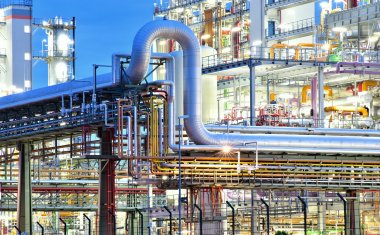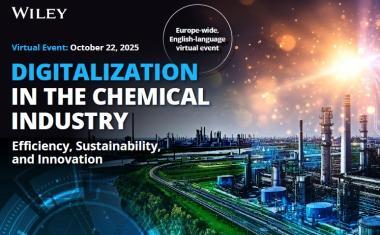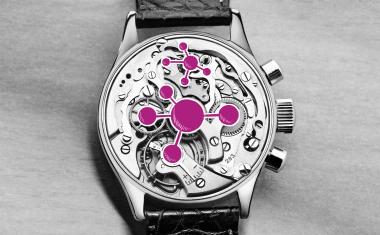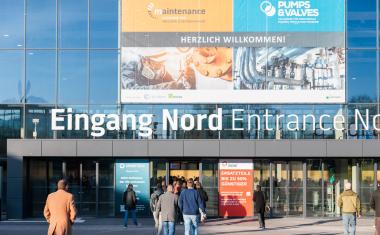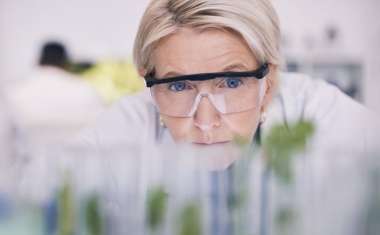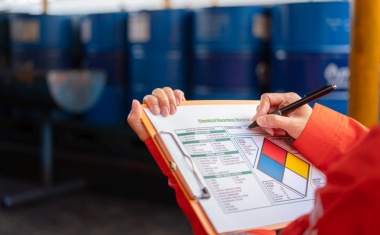Digital Transformation and Smart Manufacturing
Andreas Helget, Managing Director of Yokogawa Germany, about the importance of digital transformation on the way to autonomous systems.
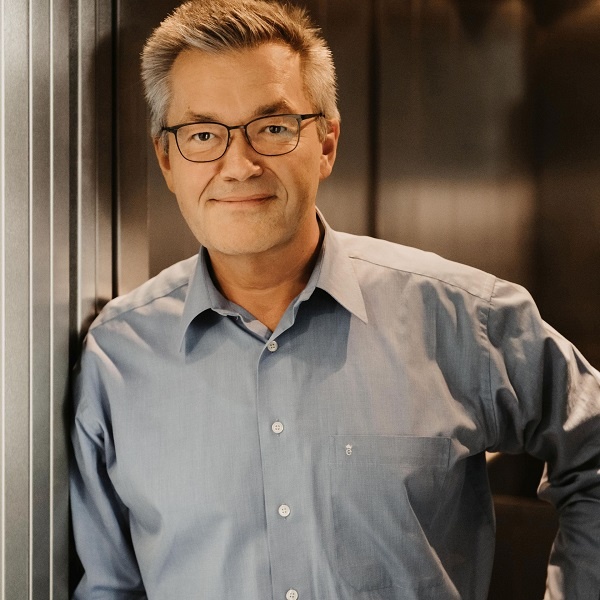
When it comes to digital transformation, the biggest potential for most companies lies in production. Increasingly volatile markets and rapid technological advances mean there is no alternative to continuous evolution and systematic optimization. CHEManager spoke to Andreas Helget, Managing Director of Yokogawa Germany in Ratingen, about the importance of digital transformation on the way to autonomous systems. Volker Oestreich asked the questions.
CHEManager: Mr. Helget, how would you define the term “digital transformation” in the specific context of the process industry?
Andreas Helget: For us at Yokogawa, digital transformation means helping our customers use digital technology to broaden their business strategy – without cannibalizing their existing business. It’s all about digital technologies enabling people to optimize processes and automate systems or organizations. Digital transformation opens the door for the process industry to what we call “smart manufacturing”. In the next step, basic digital technologies can pave the way for self-learning, self-adapting, autonomous operations. We see IA2IA – the evolution from “Industrial Automation to Industrial Autonomy” – as a journey on which you regularly have to re-establish your bearings, take a look around, venture another step forward and keep moving in the right direction.
What do you understand by “autonomous systems”? What’s the difference between “highly automated” and “autonomous”?
A. Helget: I’ll start with a definition of the term: Autonomous means being independent. In engineering, autonomous basically boils down to the ability of something to control itself. An autonomous system can decide and act independently – in other words, without being directly guided by a human being and in conditions of which it has no previous experience. The environment in which it is used no longer needs to be clearly defined in advance.
In an automated system in industry, process changes are carried out by engineers. Autonomous systems, on the other hand, decide for themselves when to use which particular means or instruments to achieve a goal – without that decision being influenced by a human being.
”We’re already seeing very rapid advances on the road to industrial autonomy, with advantages for many parts of the value chain.“
A lively debate is underway between computer scientists and engineers as to whether or not autonomous systems are simply a logical extension of automated systems. Automation follows predefined processes by choosing between clearly predetermined and clearly specified options. That may be very complex but it’s still a long way off from total autonomy. An autonomous system is definitely more than the sum of its component parts: it executes programmed processes and responds to sensor pulses, but it also has the ability to be guided by – and learn from – changing experiences. That’s where the crucial difference lies between automation and autonomous systems.
What about the acceptance of future autonomous systems in the process industry, which is traditionally conservative – and with good reason?
A. Helget: Human fallibility is a huge problem – which is why autonomous systems could turn out to be a blessing for the human race. I’m not just talking about road traffic accidents here; in industry, too, human error remains the single most important cause of accidents in spite of all the technological innovations.
Cost efficiency is always a decisive aspect in industry, of course, and it will also be the litmus test for implementing and using autonomous systems. The benefits autonomous operation is expected to bring – namely optimized safety, quality, time and resources – can be economically quantified.
For a highly automated process plant to operate autonomously, it needs to be combined with artificial intelligence. This is a challenge which process technologists must face, even if algorithms are at present no more than a vision as plant operators. AI is already employed successfully for discrete tasks, for example in energy management. Fully automated recipe management in batch processes is likewise a reality today. When coupled with AI-based online quality controls and a control system centered around a “golden batch” which learns from experience, this could result in a quick win as regards autonomous processes.
In other words, the transition from procedural automation to AI-based autonomous operation is blurred. It’s still a long road to an entire plant or plant network that is capable of completely autonomous operation, let alone autonomous value chains and networks.
Aside from economics, the legal and ethical aspects of autonomous systems and the question of safety and security are presumably also significant.
A. Helget: That’s true – there are numerous dimensions to “safety and security”. The German Ethics Council has already compiled a list of what I consider to be the most important ones. Who takes responsibility for the “actions” of autonomous machines when users themselves are only marginally involved in their decisions, or not involved at all? What criteria should a machine’s “decision” be based on in the event of a conflict and who actually defines these criteria? How can the large amounts of sensitive data which an autonomous system is obliged to collect and share in the interests of optimal performance be protected from inappropriate use?
How can the risks of such systems being misused by third parties be restricted to a minimum?
For specific, system-related applications in industry, however, the answer is clear because in the process technology sector the automation and availability complex has always been considered separately from the actual safety and security side. Provided a defined context exists, autonomous production processes fit in seamlessly here.
Autonomy on the one hand and safety and security on the other are not mutually exclusive; on the contrary, they complement one another. Just think of robotics, which has been around for a long time in the process industry. For several decades now, robots have been used in dangerous environments such as deep-sea exploration for oil, underwater inspections or hazardous areas of a plant. Their purpose in these applications is to protect people from harm – and they make a fantastic job of it too!
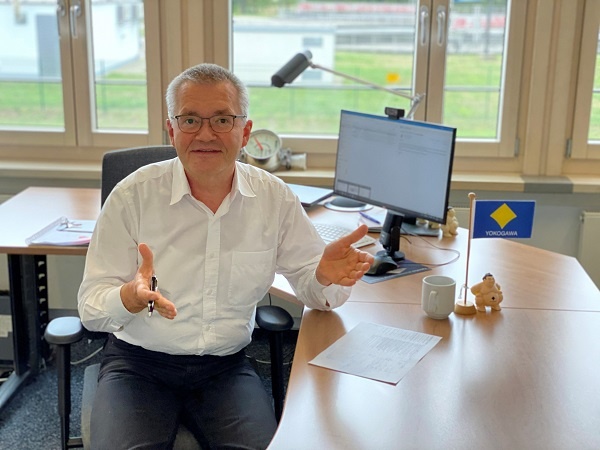
What advantages do drones or the mobile robots you just mentioned have to offer for process plants and how do they complement autonomous operations?
A. Helget: Mobile robots and drones are expected to perform multiple functions and combine them with one another. One of those functions is mobility, which requires a drive system with several on-board sensors to guide it, for instance sensors for light detection or distance measurement. The devices can then move in any direction and steer clear of unforeseen obstacles without having to be permanently monitored and controlled by a human operator.
Other functions are linked to specific tasks and applications. For example, robots use gas detectors to pinpoint leaks, high-resolution cameras to read instruments or infrared cameras to measure temperature. Drones use cameras to transmit video information to the operator, and they also transport commercial loads to remote areas. One of the first specialized applications entailed inspecting piping, storage tanks and pressure vessels. Robots have benefits for regular inspection rounds or “manual” sampling because they’re equipped with mobile sensors and actuators. It’s amazing what is already possible today – all the umpteen different sensors a robot can be equipped with. Work is even underway on robots with a sense of smell, for instance. I find that truly awesome! The data supplied by these robots is evaluated, integrated, compared and used to answer crucial, safety-relevant questions. Does it always smell like that or has a V-belt burnt through? Am I in a hazardous area? This integration technology, which ensures access to the right data, is part or the Yokogawa portfolio and it’s an area in which we’re recognized experts.
”For a highly automated process plant to operate autonomously, it needs to be combined with artificial intelligence.”
For example, the Yokogawa Robotics Task Force was set up with the aim of establishing a service platform to support unmanned and autonomous tasks such as robotics for maintenance purposes. The platform will not only provide robot fleet management but also system integration and data analysis. And our partnership with ExRobotics will accelerate robot technology’s implementation for remote inspections in hazardous environments using IEC-Ex or ATEX certified robots.
The economic aspects are one thing, but ecological criteria are also a major challenge and an important, ongoing goal for the process industry. To what extent can digital technologies act as an enabler of sustainability in the chemical industry of tomorrow?
A. Helget: In addition to plant automation, integrated energy chains or community energy management services (CEMS), a large number of specialized solutions also exist which contribute to the big picture, or should I say the big circle in a circular economy. And to which we at Yokogawa are strongly committed!
In order to become more circular, more and better measurements are essential along with procedures to ensure that all parts manufactured at some time in the past really are returned to the process. This isn’t only a process problem; it’s also a data problem. Take sneakers, for instance, which are more popular today than ever. To prevent casual footwear from simply being incinerated when it reaches the end of its useful life and enable it to be recycled, it must be possible to take the shoes completely apart. The upper must be returned to the textile cycle and the sole to the polyurethane cycle, while the adhesive and the dye must likewise be separately treated, measured and sent for recovery. If you create a digital twin of the sneaker’s characteristics and save it, you can read that data out again at the end of the lifecycle, meaning you’re well on the way to a one-hundred-percent recyclable product.
Let’s finish by taking a peek ahead to the future again: in your opinion, how long will it be until completely autonomous systems become the order of the day in process technology?
A. Helget: We’re already seeing very rapid advances on the road to industrial autonomy, with advantages for many parts of the value chain. Optimized process productivity, availability, safety and security, increased cyber security thanks to solutions with integrated functionality and answers to supply chain problems through better visibility both pre and post-production. There are many steps still to be taken on that road and even though a wider range of remote operations are now possible with only a minimum of personnel, we’re still a long way off from completely unmanned, autonomous operation with secure access to information anywhere, anytime.
So how long will it be until completely autonomous systems become the order of the day? Once again, it will be the cost-benefit ratio that ultimately determines how quickly autonomous systems become established in the process industry. Having said that, I am in no doubt at all that they’ll become established in the end.
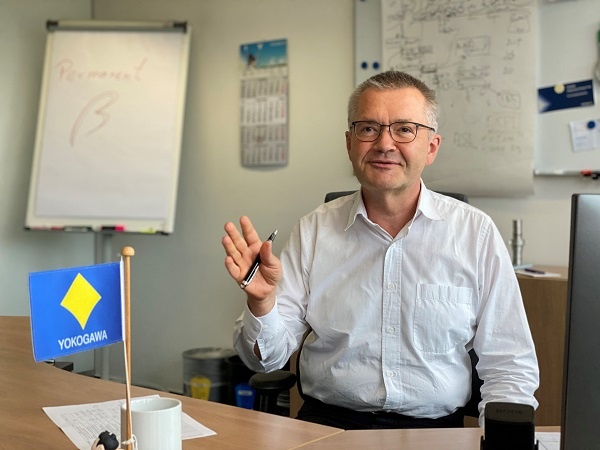
Personal Profile
Andreas Helget has been at the head of Yokogawa’s German headquarters since 2016. Since 2019, he has also been Vice-President of Yokogawa Europe and responsible for the management of the Group’s European subsidiaries. Mr. Helget holds a doctorate in engineering and worked in various executive positions – among others, at BASF and Siemens – prior to joining Yokogawa Germany. The UNO’s Sustainable Development Goals (SDG) are a matter very close to his heart. He is keen to make real progress towards the greening of the process industry by helping to establish a circular economy.



